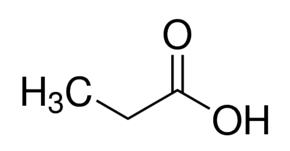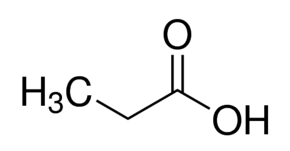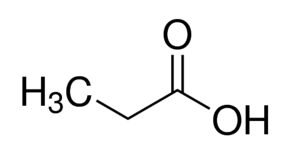Volatile Acidity: definition, legal limits and sensory thresholds
Joy Ting
January 2019
By definition, volatile acidity measures the “acids that can readily be removed by steam distillation” (1). The principle volatile acid in wine is acetic acid which presents as a vinegary aroma/flavor. Other acids included in the volatile fraction include propionic (fatty), butyric (rancid butter) and C6-C12 acids (goaty). VA is reported in grams/liter, and, in the US, standardized to acetic acid equivalents, as this is the primary volatile acid. (In Europe, sulfuric acid equivalents are used, so if you are sending samples to a lab overseas, be aware of the difference in scale.) A wine’s total acidity includes fixed acids (such as tartaric and malic) that are not removed by steam distillation, and the volatile acids. (1)


Acetic Acid Butryic Acid
The Federal limit of VA is 1.2 g/L for white wines, 1.4 g/L for red wines and 1.2 g/L for dessert wines. For late harvest wines produced from grapes picked at higher than 28 Brix, the limits are 1.5 g/L for white wines and 1.7 g/L for red wines. (2, 3). In the production winery, volatile acidity is most often measured by a Cash Still or enzymatic analysis. If you are using a Cash Still, be aware the SO2 can interfere with the measurement, so you need to do the appropriate corrections. If you are measuring with an enzymatic kit, realize you are really measuring acetic acid specifically. Other volatile acids are likely to be present as well, so the VA is likely higher than what your enzymatic is reading. (3)

Propionic Acid
The sensory threshold for detection of VA is often cited as 0.7 g/L while at 1.4 g/L, wine takes on the odor and flavor of vinegar. (1) This threshold is very subject to matrix effects, meaning that some wines will show their VA at lower levels and some will hide it even at higher levels. As a general rule of thumb, VA will seem more prevalent in lighter bodied, delicate wines and less apparent in wines with higher sugar or alcohol. In addition, high levels of ethyl acetate may enhance the perception of volatile acidity. Volatile acidity interacts with other flavors in the wine to affect its sensory properties. VA magnifies the perception of acids and tannins. (4)
References
- Jackson, R. S. (2014). Wine Science: Principles and Applications(4 edition). Amsterdam: Academic Press.
- Zoecklein, B., Fugelsang, K. C., Gump, B. H., & Nury, F. S. (1995). Wine Analysis and Production. New York: Springer.
- Stern, E (2013) How Winemakers are Eliminating Volatile Acidity in Wine. Wine Business Monthly, November 2013.
- Zoecklein, B. (2011) Enology Notes #158: Volatile Acidity. Retrieved from https://www.apps.fst.vt.edu/extension/enology/EN/158.html.
- Images from Sigma Aldrich (https://www.sigmaaldrich.com/catalog)
